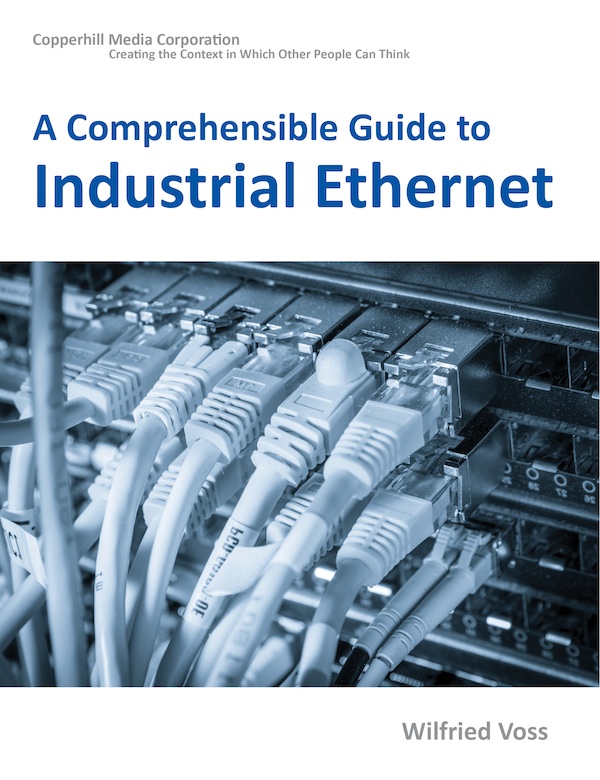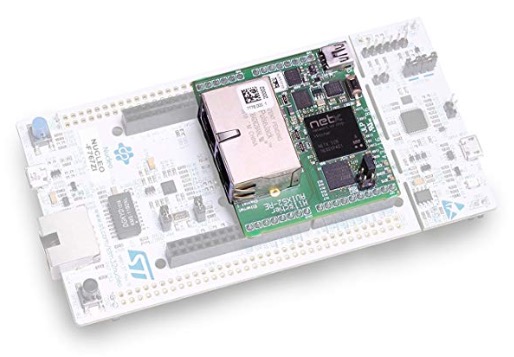Recent Posts
Industrial Ethernet Guide - The Costs of Industrial Ethernet
Posted by on

The following is part of A Comprehensible Guide to Industrial Ethernet by Wilfried Voss.
“You can’t go to your local computer store and buy an
Ethernet router for your machine.”
– Advice found at a technology forum
The lowering costs of Ethernet hardware have made Ethernet an increasingly attractive option for industrial networking applications. However, while the costs for Ethernet control boards are, in fact, lower than they were in the past, it would be considered an oversight to compare individual control board costs, rather than the entire system architecture, to justify the use of Industrial Ethernet.
It may sound obvious, but the point needs to be made: There are significant (and costly) differences between the design of a traditional Ethernet network for an office environment and that of Industrial Ethernet for factory floor automation and control. An Industrial Ethernet network must be designed and implemented with these differences in mind.
For instance, in most automation and control applications, eighty percent of the network traffic is local, i.e., one local device communicates with another local device frequently using multicast (one sender, many receivers) packets.
In most IT installations, the reverse is true where eighty percent of the network traffic is routed to external locations (such as the data center or the Internet) using unicast (one sender, one receiver) packets.
For that and several other reasons (e.g., flexible node counts, varieties of media, and predictable real-time data traffic performance, to name a few) Industrial Ethernet requires higher levels of segmentation (i.e., the higher number of Ethernet hubs and switches) as compared to traditional networks in a corporate network.
It would be an unfair approach to explain the high costs of Industrial Ethernet by the mere requirement for additional network devices, but the fact remains that, for instance, Industrial-strength Ethernet switches are expensive.
Industrial Ethernet devices, in general, can never be as low-cost as they are in the office world; the scale of industrial deployment limits them. The costs accumulate quickly given safety concerns, not only in terms of safe, continued operation but also the protection of human life.
Industrial Ethernet serves primarily demanding automation tasks that require vast speed and real-time control, the transportation of vast amounts of data in a timely fashion, and the processing of a massive number of I/O signals. Such applications may be, for instance, robotics or medical devices, which bare the risk of bodily harm to operators or patients, respectively, in case of serious malfunctions. There is also the consideration of financial losses during downtime when production machinery is involved. In either case, a high level of reliability is of paramount importance.
Whatever the downfall caused by a malfunction may be, saving costs on additional network devices would contribute to the probability of dangerous failures.
Unlike the office or home networking environment, industrial networking demands more rigorous equipment supporting a more extensive temperature range and the ability to deal with harsh environmental conditions. Challenges include high electrical noise originating from high voltage power-lines, motor-driven EMI-induced elements, shock, and vibration. All these factors require durable connections and stringent cabling requirements within a factory automation floor.
Also, power requirements for industrial environments differ from that of standard office data networks; the equipment operates with 24 volts of DC power. To maximize network availability, Industrial Ethernet equipment also includes fault-tolerant features such as redundant power supplies. The equipment is also modular to meet the highly varying requirements of a factory floor.
All these additional, mandatory features reflect in the costs of the overall system, and thus, the careful analysis and design of an Industrial Ethernet network cannot be emphasized enough.
Besides the increased costs for industrial-strength hardware components, it would be a mistake to underestimate the efforts for project planning, since Industrial Ethernet introduces numerous interoperability and integration issues. The design and installation of an Industrial Ethernet project must be carefully planned and executed and thus requires extensive knowledge of the technology. In the same sense, the learning curve for newcomers is steep.
The operating costs for Industrial Ethernet solutions consist mainly of maintenance and network administration expenses. Some technologies (such as EtherNet/IP with CIP Sync and PROFINET IRT) are highly sophisticated and may, therefore, impose significant network administration efforts. Likewise, any use of managed Ethernet switches requires network expertise. In many instances, a network engineer will be needed on location for commissioning and maintenance.
netSHIELD"NSHIELD 52-RE" - Industrial Ethernet Development Platform
 netSHIELD is an evaluation expansion board with Arduino compatible connectors for development purposes.
netSHIELD is an evaluation expansion board with Arduino compatible connectors for development purposes.
It enables the user to connect a Microcontroller based application to all market relevant Real-Time-Ethernet industrial networks with best-in-class real-time capabilities, like PROFINET, Ethernet/IP, EtherCAT, and others.
The extension board features a netX 52 system-on-chip. The netX SoC architecture is designed from the ground up for the highest demands on flexibility, determinism, and performance in terms of multi-protocol capability and low latency for short cycle times. The heterogeneous multi-core architecture features an ARM processor core, coupled with a flexible communication subsystem (xC) for varieties of industrial applications support.
 Loading... Please wait...
Loading... Please wait...
